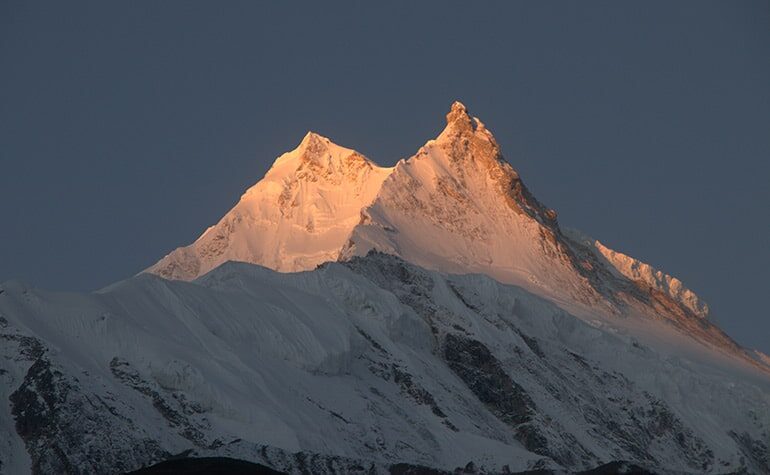
1 Dec 2022 Outdoor Himalayan
All About Manaslu: Trek Routes, Permit, Season, Acclimatization, Gears, Difficulty, Altitude Sickness package!! Manaslu region is Nepal’s one of the hidden beauty regions that remained isolated for many years. The region is located in the Gorkha district which is west of Kathmandu. It has only been a few years since the region has opened for trekking and expedition.
This Manaslu region is popular for its off-beat trails, deep valleys, ancient Tibetan culture, diverse flora, and fauna, beautiful landscapes, diverse geography, old monasteries and caves, and picturesque snow-capped mountains in the vicinity. The Manaslu region trek can be done through various trek routes in the various parts of this region. Manaslu Circuit Trek, Manaslu Rupina La Pass Trek, Manaslu Two Passes Trek, Tsum Valley Trek, and Manaslu Tsum Valley Trek are some of the famous treks in the Manaslu region.
Manaslu Region Trek is a complete trek package for trekkers wanting to explore something unique, natural, and diverse. The region not only offers natural beauty but the region itself in its raw form. Since this region is less explored, trekkers can feel or experience the originality of this region. As the region is remote, living in this region with fewer facilities but closer to the real nature with local natives will surely give new insights. Indeed, it will be a memorable experience.
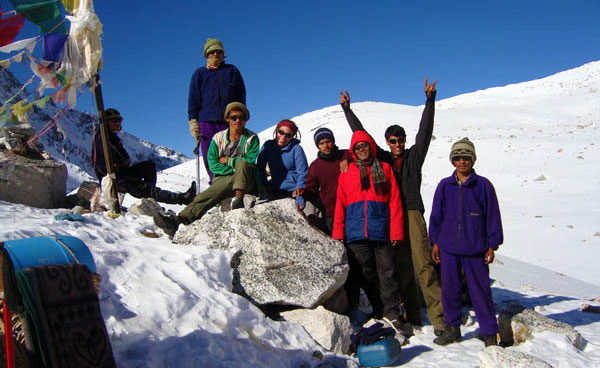
Manaslu Circuit Trek is one of the best and most challenging treks due to its diverse geography and sections. Experience the splendid views of the world’s 8th highest Mt. Manaslu (8,163m), Ganesh Himal, Himlung Himal, Siringi Himal, and adjacent snow-capped mountains. Besides this, the diversity in topography and experiencing the change in altitude is a new experience.
Manaslu Two Passes Trek beauty is enjoying the adventure of the two highest passes Larke La and Thorang La of the Manaslu and Annapurna regions respectively in a single trek. The trek duration is long and challenging but abundant with picturesque natural beauty. Experience the trekking transition from the off-beat Manaslu region to the well-equipped and developed trails in the Annapurna region.
Manaslu Rupina La Pass is one of the toughest treks in the lower Manaslu region. The trek connects with Manaslu Circuit where trekkers can experience traversing both Rupina La Pass and Larke La Pass. The Rupina La in the lower Manaslu region is abundant with diverse flora and fauna, varying landscapes, and towering snow-capped mountains.
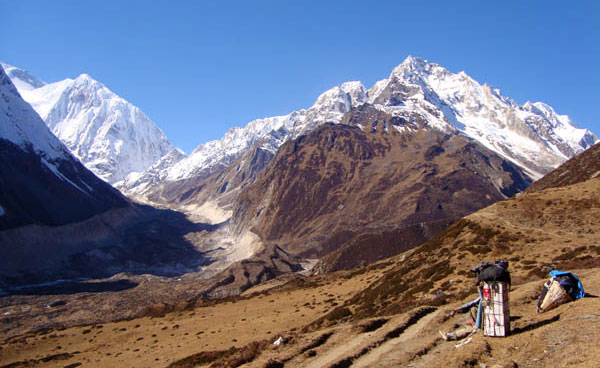
Tsum Valley is a sacred valley in the Manaslu region. It’s been only 14 years since this valley opened for trekking. Slowly, the number of trekkers is increasing to explore this holy valley. Tibetan Buddhism culture is highly influenced in this valley. Hence, killing and eating animals are strictly restricted. The holy Buddhist caves and monasteries are major attractions alongside the warm Tibetan hospitality and culture.
The Shyagya Practice is another magical thing to experience which has been continued for 100 years. The meaning of Shyagya is non-violence. In this practice, killing, selling, hunting, trapping animals, and birds, meat trading, collecting honey, and burning the forest are strictly prohibited and against Buddhist philosophies.
Tsum Valley Trek is a new and magical experience for many trekkers to witness the ancient Tibetan culture intact and in practice for such long years. Besides the culture, the natural beauty and stunning views of Ganesh Himal, Mt. Manaslu, Siringi Himal, Boudha Himal, and many other mountains are a complete treat. Trekkers can enjoy only Tsum Valley Trek or can combine it with Manaslu Circuit for the Manaslu Tsum Valley Trek.
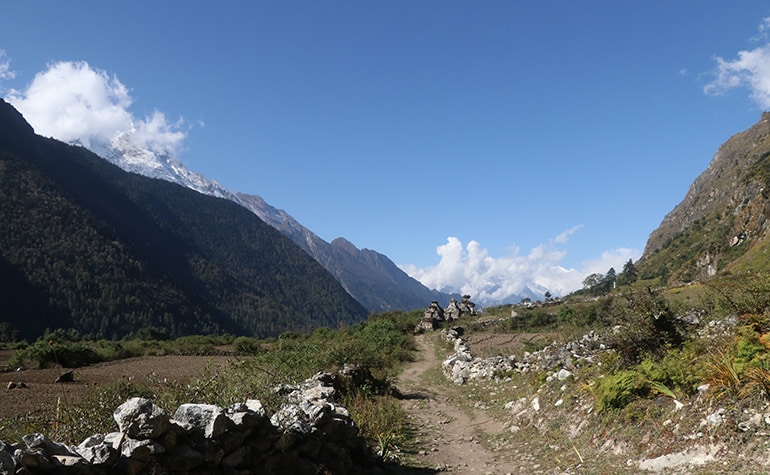
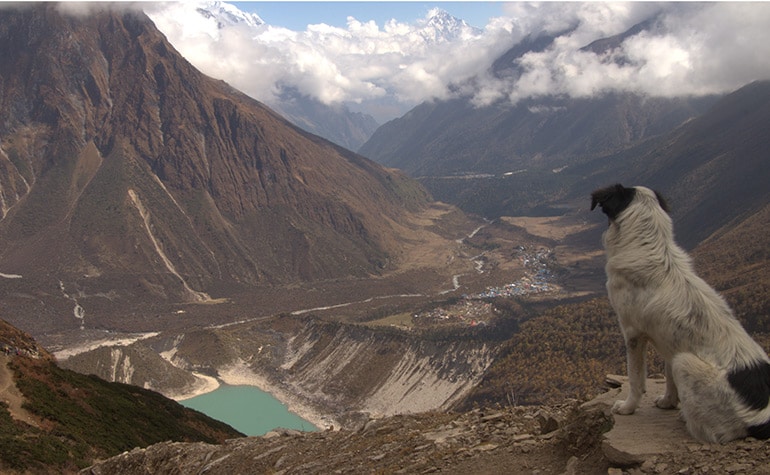


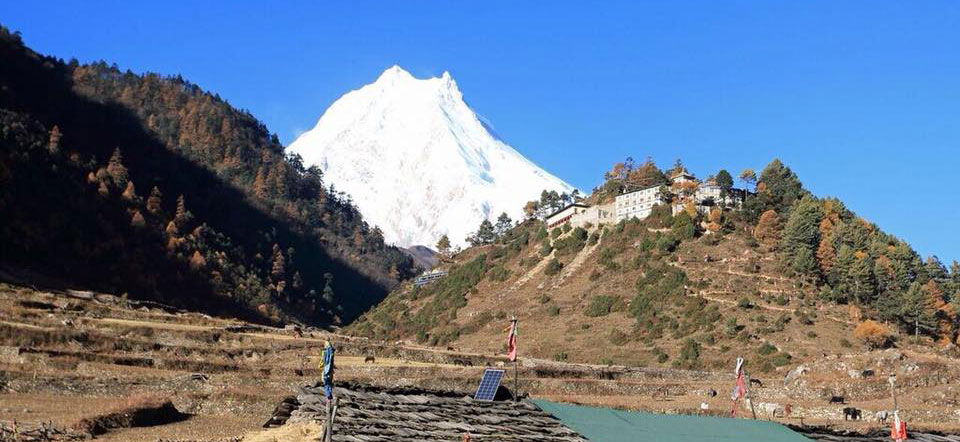

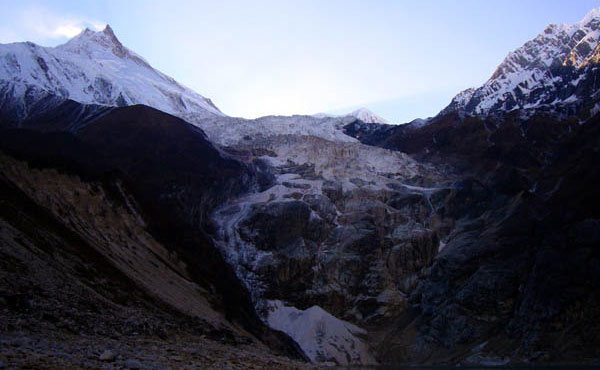
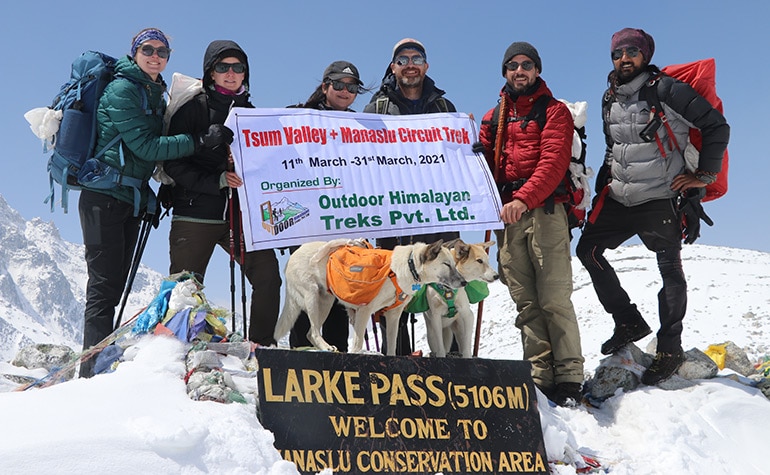
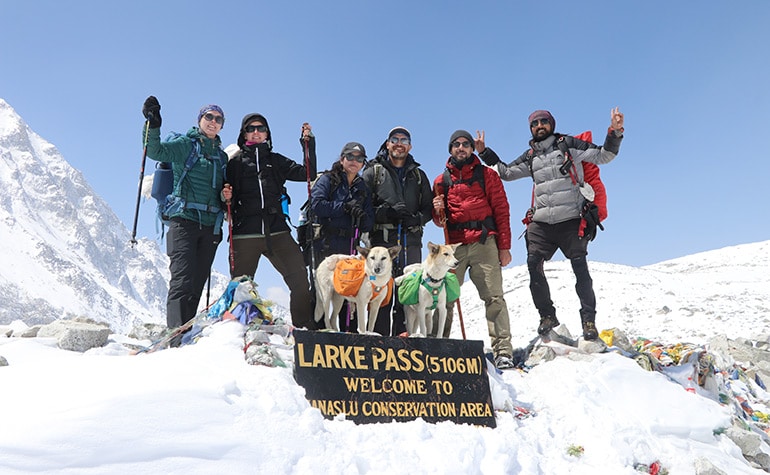

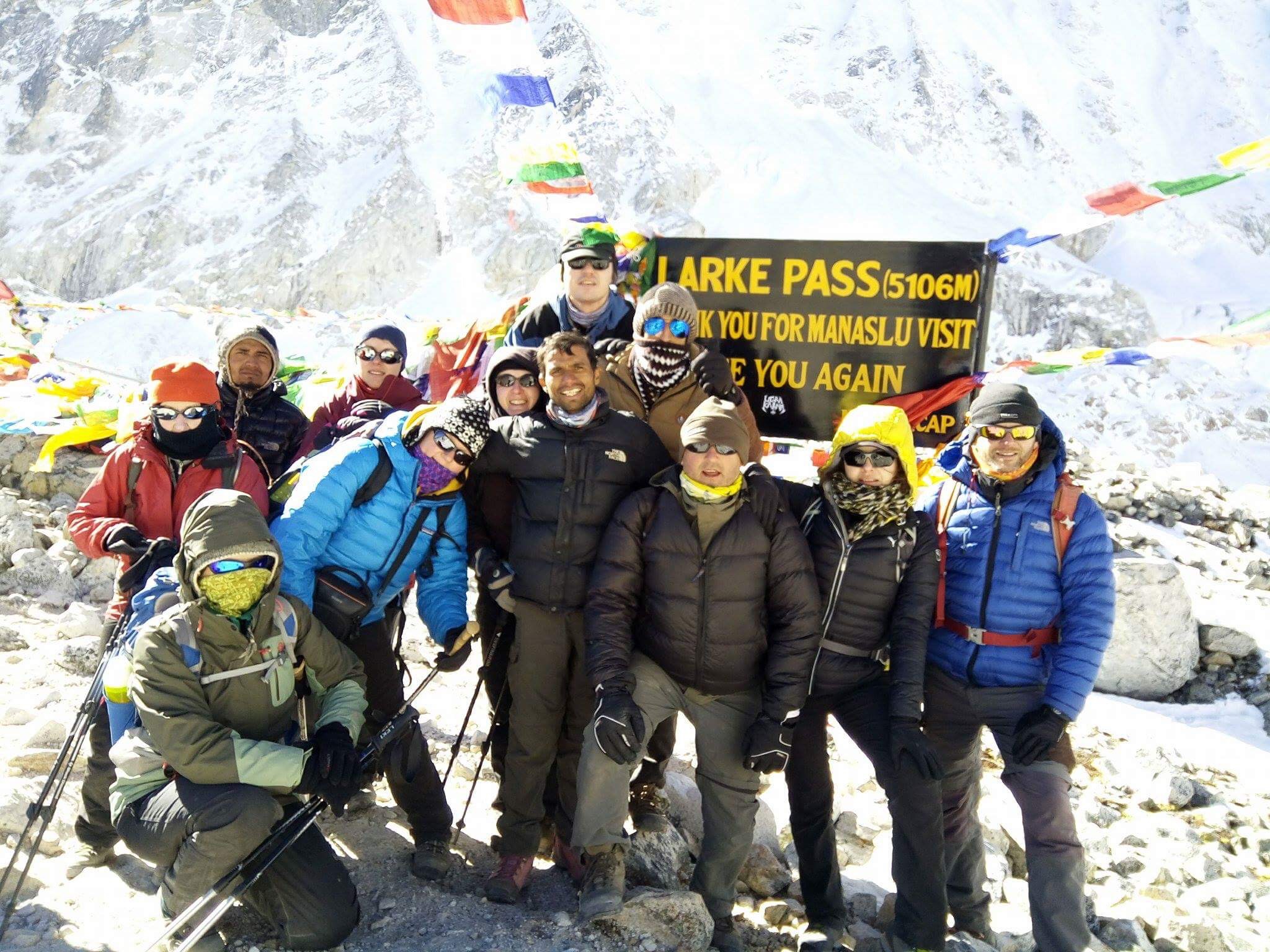
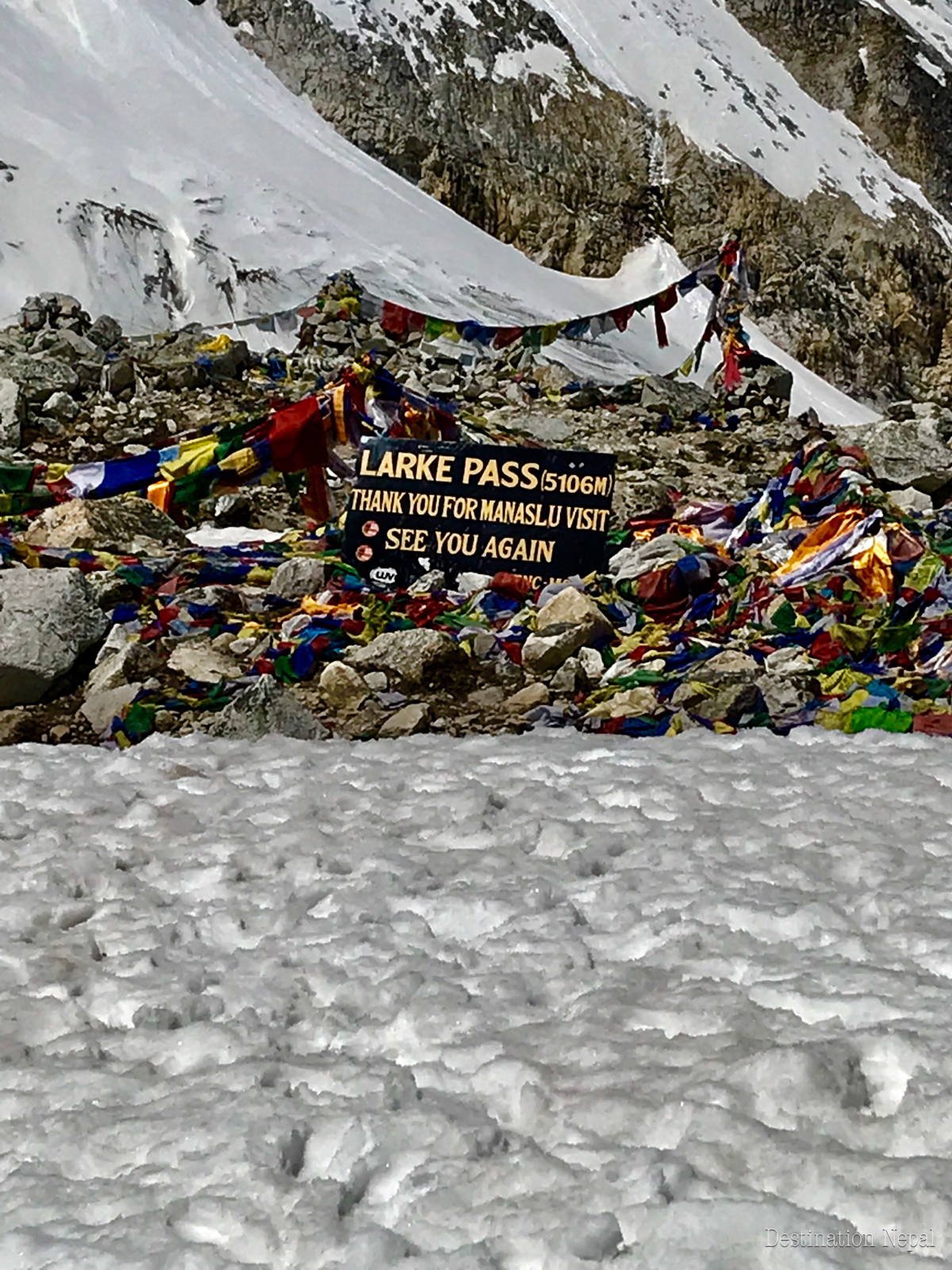
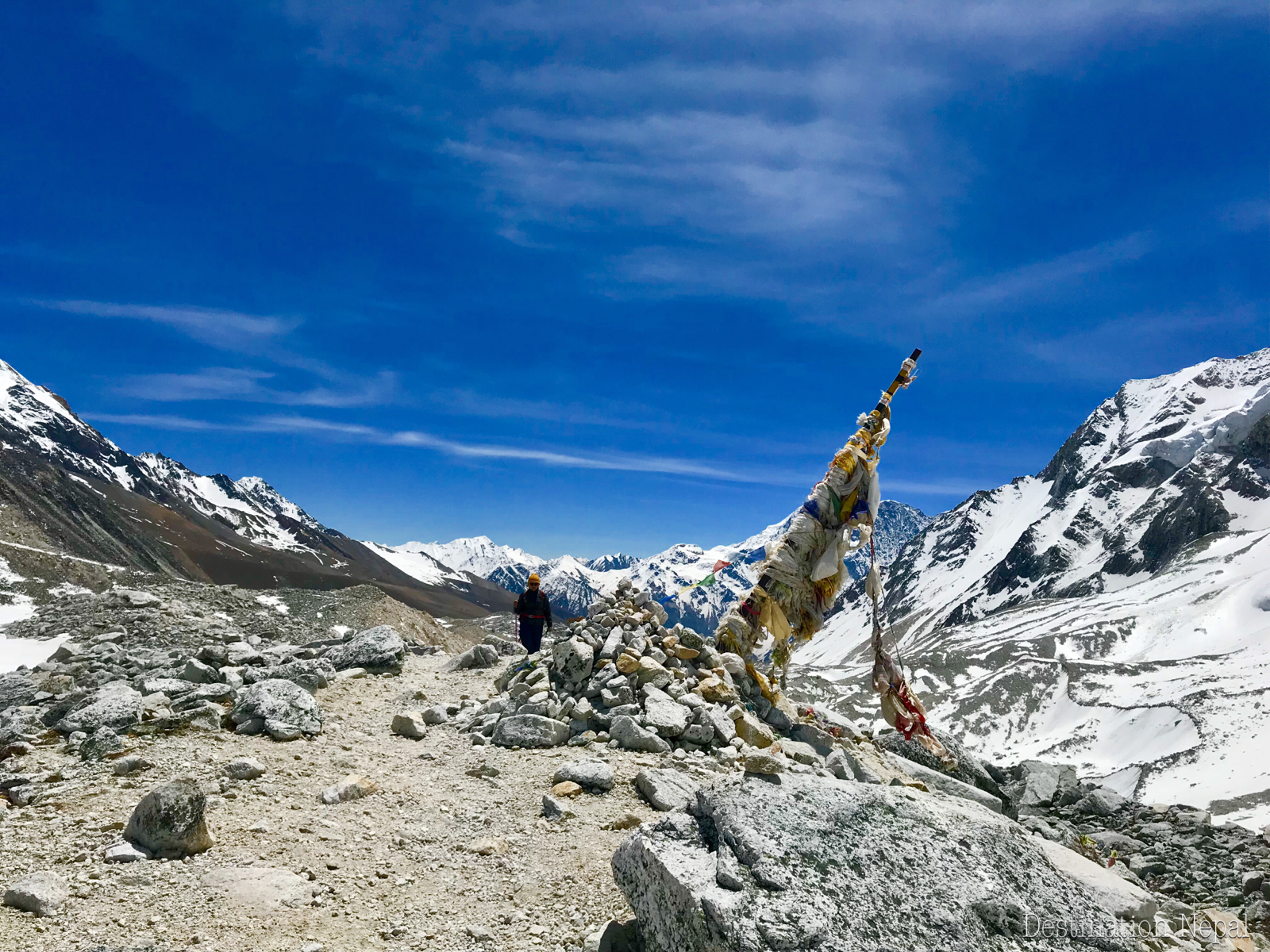
All About Manaslu: Trek Routes, Permit, Season, Acclimatization, Gears, Difficulty, Altitude Sickness Info
Accommodation
Accommodation during the stay in the city (Kathmandu or Pokhara) is a hotel. The locally operated teahouses/guesthouses are accommodations throughout the Manaslu region trek. In the lower regions, one gets private rooms with shared bathrooms. In the higher regions and at the peak seasons, room sharing must be done. This is trekking and this is normal.
Just enjoy the stay and experience the beauty of this region. Also, one needs to pay extra money for the use of a hot water bucket, charging electronic devices, Wi-Fi, and laundry. It is wise to have a personal hygiene kit for ease.
Meals
Only breakfast is provided during the stay in the city. Throughout the trekking in the Manaslu region, 3 meals a day (breakfast, lunch, & dinner) is provided. As mentioned earlier, Manaslu is a remote region. The meals provided are basic but appropriate for the trekker’s health. Dal-Bhat is a Nepali staple food that gives energy to trekkers. It is served with home-grown fresh vegetables and pickles.
Tibetan Buddhist culture is highly influenced. So, animal killing is prohibited in some parts. One may not get to eat meat products. It is also good to eat light but healthy energetic foods and avoid meat during the trek. Bring some granola or energy bars and light snacks. One can munch it whenever one feels hungry or likes it.
Drinking water
Drinking water is easily available in the Manaslu region. One can purchase bottled waters that cost from $2-4. It is the best idea to fill up the water in a bottle at the teahouses or taps. If one wishes to fill boiled water, pay an additional charge for it. Else, for safety and good health, use water purification solutions in water before use. It’s always nice to carry a water bottle and water-purifying kits.
Communication
Manaslu region is remote but lately, it is slowly developing. The phone network and internet connectivity are widely accessible in most parts of the lower Manaslu region. The phone signals and internet connectivity are stable. But, it is difficult to get phone networks and internet connectivity in the higher regions. One can pay an extra charge to use the Wi-Fi facility at the teahouses. Else, purchase a 4G Sim card with an internet data package for using the internet. For emergencies, a satellite phone facility is there.
Transport
Manaslu region is the least developed. Thus, the trails are off-beat and rugged. For transport facilities, local or public transportation is the only means. There is no airport, hence no airway facility. From Kathmandu to Arughat or Ranglung Khola, take a public bus ride which is a unique experience for many trekkers. Upon reaching Arughat, take a scenic jeep ride on the rugged off-beaten roads to Soti Khola. Otherwise, book a private jeep from Kathmandu to Soti Khola for a direct ride.
Manaslu Region Trek Types and their Trek Routes
Manaslu region trekking can be done through various routes and in various parts of the region. The most popular Manaslu Trekking with its trek routes are shown below:
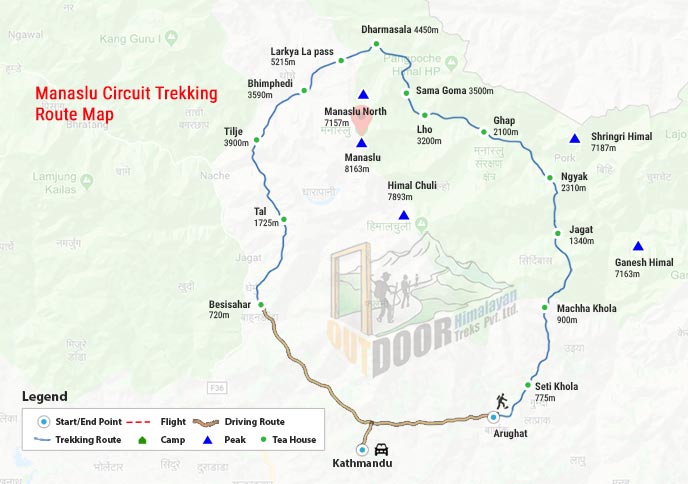
- Manaslu Circuit Trek (5106m, Larke La Pass)
Trek Route: Soti Khola – Machha Khola – Jagat – Ngyak – Ghap – Lho – Sama Goan – Samdo – Dharmashala- Larke La Pass – Bimthang – Tilije – Tal – Besisahar - Tsum Valley Trek (3741m, Mu Gompa)
Trek Route: Soti Khola – Nauli Khola – Tatopani – Jagat – Lokpa – Chumling – Chhokangparo – Nile – Mu Gompa – Chhokangparo – Chumling – Eklebhatti – Dovan – Soti Khola - Manaslu Circuit Trek with Tsum Valley (5106m, Larke La Pass)
Trek Route: Soti Khola – Nauli Khola – Tatopani – Jagat – Lokpa – Chumling – Chhokangparo – Nile – Mu Gompa – Chhokangparo – Lokpa – Deng – Namrung – Sama Goan – Samdo – Dharmashala- Larke La Pass – Bimthang – Tal – Besisahar - Manaslu Two Passes Trek (5416m, Thorong La Pass)
Trek Route: Soti Khola – Machha Khola – Jagat – Pewa – Ghap – Lho – Sama Gaon –Samdo – Dharmashala – Larke La Pass – Bimthang – Tilije – Danaque – Chame –Pisang – Manang – Ledar – Thorong Phedi – Thorang La Pass – Muktinath – Jomsom - Manaslu Rupina La Pass Trek (5106m, Larke La Pass)
Trek Route: Ranglung Khola – Barpak – Laprak – Nirtse Kharka – Rupina La Phedi – Rupina La Pass – Meme Kharka – Gay Kharka – Deng- Ghap – Lho – Sama Gaon – Samdo – Dharmashala – Larke La Pass – Bimthang – Dharapani
Manaslu Region Permits Cost
Manaslu Restricted Area Permit (RAP)
- USD 100/week per person + USD 15/person (each day after a week) [Sep-Nov]
- USD 75/week per person + USD 10/person (each day after a week) [Dec-Aug]
Manaslu Conservation Area Permit (MCAP)
- USD 30/person (Foreigners)
- NPR 1000/person (SAARC)
Annapurna Conservation Area Permit (ACAP)
- USD 30/person (Foreigners)
- NPR 1000/person (SAARC)
Tsum Valley Restricted Area Permit (RAP)
- USD 40/week per person + USD 7/person (each day after a week) [Sep-Nov]
- USD 30/week per person + USD 7/person (each day after a week) [Dec-Aug]

Manaslu Region Mandatory Permits for different trek types
- Mandatory permits for Manaslu Circuit Trek, Manaslu Two Passes Trek, & Manaslu Rupina La Pass Trek= Manaslu RAP, MCAP, & ACAP
- Mandatory permits for Manaslu Circuit Trek with Tsum Valley= Manaslu RAP, MCAP, ACAP, & Tsum Valley RAP
- Mandatory permits for Tsum Valley Trek= Tsum Valley RAP, & MCAP
Where to issue the permit and how long it takes?
Normally, the permits are issued in Kathmandu before the start of the trek and after you arrive in Kathmandu. It takes only a few hours to issue the permit. We get the permits from Nepal Tourism Board, Kathmandu.
We issue the permits as the requirement of the trek. Generally, we require Manaslu Conservation Area Permit (MCAP), Annapurna Conservation Area Permit (ACAP), and Restricted Area Permit (RAP). One need not worry as all the issuance of permits is taken care of by the travel agency. For the permits, the following documents must be submitted to the travel agency.
- Passport photocopy with 6 months validity
- 4 Passport size photos
- Nepali Visa with the arrival stamp
- Travel Insurance papers (all essential things must cover)
- Flight tickets photocopy
- Agreement Letter to trekking company and Immigration Head
Manaslu Region Trek: Start and End Points with Maximum Altitude
| Trek Types | Start Point | End Point | Max. Altitude |
| Manaslu Circuit Trek | Soti Khola | Besisahar | 5106m Larke La Pass |
| Tsum Valley | Soti Khola | Soti Khola | 3741m Mu Gompa |
| Manaslu Tsum Valley Trek | Soti Khola | Besisahar | 5106m Larke La Pass |
| Manaslu Two Passes Trek | Soti Khola | Jomsom | 5416m Thorong La Pass |
| Manaslu Rupina La Pass | Ranglung Khola | Dharapani | 5106m Larke La Pass |
Manaslu Region Trek Difficulty
Manaslu region is one of the remote regions of Nepal. It means the region is less developed. Better facilities are hard to get. The trekking trails are off-beat, rugged, and full of ascend and descend. During the rainy season, the trails are muddy, & slippery and icy slippery, and snowy during the winter season. The change in climate, high elevation, altitude sickness, and less availability of facilities are other factors that make the trek a little difficult.
The trek is moderately difficult but achievable. With the proper assistance of the expert guide and the strong determination of the trekkers, the Manaslu region trek can be smoothly done. Before venturing into the Manaslu region trek, trekkers should be physically and mentally fit. Trekkers must participate in physical exercises, and day hikes if possible at high hills including some ascend and descend. Not only this, eat proper balance diet food and do necessary health check-ups. Even non-trekkers can complete the Manaslu region trek if the recommendations suggested are done with sheer dedication.
Acclimatization and Altitude Sickness
Acclimatization is very essential during trekking. Proper acclimatization helps the trekkers prevent altitude sickness and the body also gets adjusted to the changing environment. During Manaslu region trekking, Larke La Pass (5,106m), Thorang La Pass (5,416m), and Mu Gompa (3,741m) are the highest-elevation trekking through different routes. Thus, considering the health and safety of the trekkers, the itinerary is properly scheduled for acclimatization rest days.
Altitude sickness is natural in the mountain regions of Nepal above 2500-3000m. All kinds of people may suffer from altitude sickness be they healthy or non-healthy. But, no need to panic as it is preventable. One needs to know the altitude sickness symptoms and guidelines to prevent it which are highlighted below:
Symptoms of Altitude Sickness Symptoms
Altitude sickness symptoms are primary initially and get extreme if proper attention is not given.
Primary symptoms: Headache, breathlessness, loss of appetite & sleep, lethargy, vomiting, giddiness
Extreme symptoms: delusions & unconsciousness along with primary symptoms
Precautionary Guidelines
- Notify immediately to the guide
- Stretch the body and do a warm-up (early before the trek)
- Keep yourself hydrated by drinking water at regular intervals
- Urinate often (through the trek)
- Walk slowly and maintain the pace
- Take good rest and sleep
- Avoid taking too much salt, junk foods
- Avoid drinking alcohol, and smoking
- Immediately descend if one feels uneasy or difficult
- Take an altitude sickness medicine (consult a guide)
Best Season
Spring (Mar-May) and Autumn (Sep-Nov) are the best seasons for the Manaslu region Trek. The weather is pleasant, bright, and clear. The trails are rough but comfortable to walk. In the Spring season, witness the blossoming seasonal flowers throughout the trek. In these both seasons, the temperature during the day is warm and slightly colder at the night. As the altitude rises, it gets colder.
During the rainy season, the trails get slippery due to heavy rainfall. Also, high chances of landslides during this season. During the winter season, many places are covered with snow. Thus, the region is closed for trekking when there is heavy snowfall and the trail becomes blocked during the winter season. It is riskier to trek in the Manaslu region in the rainy and winter seasons and only recommended for experienced trekkers with proper preparation and planning.
Travel Insurance
Travel Insurance is mandatory for the Manaslu region Trek. Trekking in an unknown or unfamiliar region, travel insurance plays a key role. It acts as a safety net against all unanticipated and uninvited events. Hence, get travel insurance from a reputed insurance company. It must cover all emergency evacuations, flight cancellations, theft/loss of luggage, altitude over 3000m, and medical extremities. Travel Insurance is a pill for a hassle-free journey.
Do we require a guide?
Since Manaslu is a restricted region, a licensed guide is compulsory. For the Manaslu region trek, the minimum number of trekkers must be two. Hence, solo trekking is completely prohibited. The guides are very experienced and they know the region in and out deeply. This region is remote and the off-beat trails make it difficult for trekkers. At this time, the guide is your savior. The guide will take care of you, as well as, look after & arrange all the necessary arrangements. It will be excellent if you take a porter guide who will carry the luggage and guide you simultaneously.
Porter Luggage Limitation
Porters make the trekking journey easy for the trekkers. They are the one who carries the heavy luggage throughout the trekking journey. Trekkers can enjoy the trekking journey freely as porters are there to carry their luggage. Porters do a commendable job of carrying heavy luggage on ascending and descending steep and rugged trails. It is a tough job. Therefore, the porter’s luggage limitation is 18 to 20 kg per person. They carry the luggage of two trekkers.
Equipment Lists
Vital Documents: Passport, Travel Permits, Visa Photocopy, Passport size photos
Nutrients: Light snacks, granola/energy bars, and energy drink mix
Wears: Windcheater jacket, Thermals, Insulating Down Jacket, Fleece, Long sleeve shirts, Gloves, Towels, Inner garments, Trekking pants, Trousers, Shorts, Socks, Raincoat, Balaclava, Bandana, Gaiters, Raincoat
Shoes: Camp shoes, Pair of hiking boots, Rubber sandals
Accessories: Sunglasses, Hats/Caps, Sunscreen, Lip Balm, Water bottles, Pocket Knife, Solar chargers, Batteries, Head Lamps, Torch, Umbrella, Sewing kit, Water Purifying solution kits, reusable bags to deposit waste, separate clean/dirty clothes
Equipment & Gears: Warm Sleeping bags, Map, Trekking poles, Duffel bag, Carabiners, Crampons
Medicine: First-Aid Kit, Altitude sickness medicines, Insect repellents, Blister kits, Approved medicines
Personal Hygiene Kit: Hand sanitizer, wet wipes, napkins, sachet shampoo, moisturizer, hand wash/soaps, toothbrush, toothpaste, comb/brush, razor, and for ladies (menstrual kits)
Note: Only bring the necessary items from the above list. Else we can arrange these items for rent or purchase here.
TAGS: Manaslu Circuit Trek Manaslu Rupina La Pass Manaslu Trek Difficulty Manaslu Trek Permit Manaslu Trek Route Manaslu Two Passes Trek Tsum Valley

